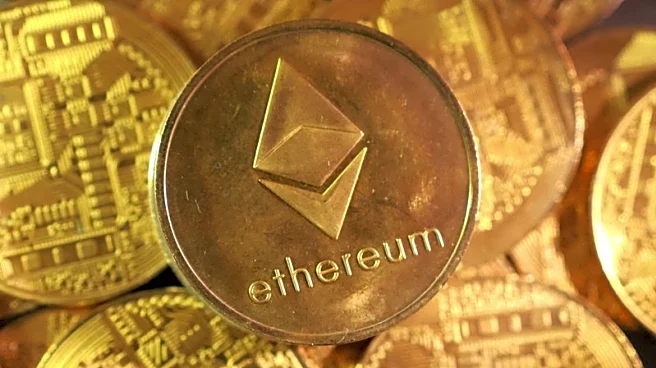What's Happening?
XRP is experiencing significant market activity as it trades around $2.26-$2.30 on November 15, 2025. This follows the launch of seven spot XRP exchange-traded funds (ETFs) on November 13, which generated
approximately $58 million in first-day trading volume. Despite the strong start, XRP's price dropped around 8% due to a 'sell-the-news' reaction. The market is also reacting to the end of Ripple's legal battle with the U.S. SEC, which has removed a major regulatory overhang. Additionally, nine more XRP ETFs are scheduled to launch between November 18 and November 25, further expanding the ETF offerings for XRP.
Why It's Important?
The introduction of XRP ETFs represents a significant development in the cryptocurrency market, providing new liquidity sources and potentially increasing institutional interest in XRP. The resolution of Ripple's legal issues with the SEC may enhance confidence among investors and institutions, potentially leading to increased adoption and integration of XRP in financial products. However, the market remains volatile, with technical indicators suggesting short-term downside risks. The broader impact on the crypto market includes shifts in investor focus from Bitcoin and Ethereum to XRP, as evidenced by net outflows from Bitcoin and Ethereum ETFs.
What's Next?
The upcoming launch of additional XRP ETFs could further influence market dynamics, potentially increasing demand and liquidity for XRP. Investors will be closely monitoring the performance of these ETFs and any regulatory developments that may arise following the SEC case resolution. The market will also watch for changes in XRP's price and trading volume, as well as any shifts in investor sentiment towards newer high-beta tokens.
Beyond the Headlines
The launch of XRP ETFs and the resolution of legal issues may have long-term implications for the cryptocurrency market, including increased regulatory scrutiny and the potential for more financial products based on cryptocurrencies. The integration of XRP into institutional portfolios could drive broader acceptance and use of digital assets in traditional finance.












